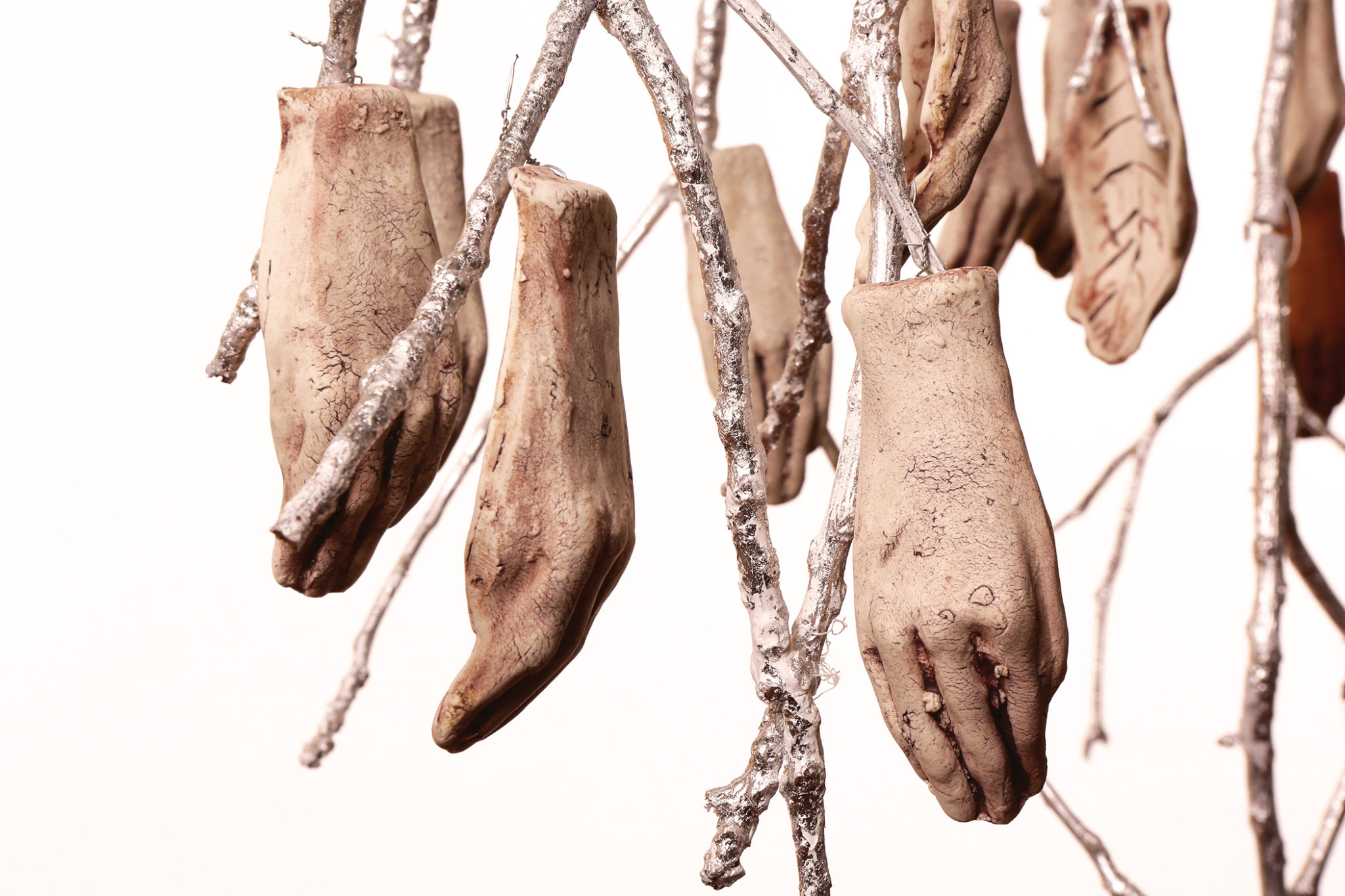
Courtesy of Artspace New Haven
Places are wrought with the histories of their inhabitants, who must retell these narratives — a burden that has historically been mismanaged. “In Plain Site/Sight,” an art exhibit that opened on Nov. 30 at Artspace New Haven, seeks to address these underrepresented histories.
“In Plain Site/Sight” will be on view in the gallery until March 2. The exhibit contains art of varying mediums that comment on New England’s participation in the transatlantic slave trade. The exhibit seeks to explore how contemporary art can engage with histories of settler colonialism, the slave economy and the displacement of indigenous peoples.
The exhibit was curated by Niama Safia Sandy — a New York–based cultural anthropologist, curator and essayist. Sandy met Artspace’s gallery director Sarah Fritchey while working on the inaugural Southeast Queens Biennial exhibition earlier this year.
“I was so impressed with working with [Sandy], especially with listening to her on panel discussions and knowing her history of curating, which comes from a cultural anthropology background,” Fritchey said. She added that Sandy “allows for a bridge that allows conversations about the arts to extend further than the arts.”
The exhibit presents these conversations — which encompass economics, conflicting histories and cultural anthropology — through the lens of each participating artist. Much of the art on view draws from the personal and ancestral history of each artist.
The first work visitors encounter upon entering the exhibit is the audio of Deborah Jack’s video “a/salting,” which highlights the crashing waves of the Caribbean Sea. Jack is from Sint Maarten, a Caribbean country, and the sounds of the waters of her youth and history permeate and inform visitors’ viewing experience.
“I kind of intended it to be a grounding element for the exhibition, in that we don’t get any of this without the sea,” Sandy said. “Water is grounding, but it can kill you, and what does that mean when we really look at history?”
In another work, James Montford, a New London–born artist with Pequot and African-American heritage, enlarged a portion of the well-known 1851 painting “Washington Crossing the Delaware” to feature one of his indigenous ancestors, who appears in the painting as an oarsman.
In six mask paintings, which are based on the West African masks in the collection of the Yale University Art Gallery, Tajh Rust ART ’19 considers his relationship with his Jamaican heritage.
Jocelyn Armstrong Braxton, a Bridgeport-based artist, draws from personal familial research in her work “Our Hands in Your Hands.” Armstrong Braxton’s paternal lineage descends from enslaved Africans who resided on James Madison’s plantation. “Our Hands in Your Hands” is an interpretation of her family tree made from hands that resemble tobacco leaves. The work engages with Armstrong Braxton’s family’s history of white-passing, as the color of the hands coincides with each of her ancestor’s self-identified race.
Adama Delphine Fawundu extended this theme by screen-printing herself into history. Fawundu chose an array of historical relics — such as newspaper stories, music scores and maps — and overlaid an image of the back of her head onto each of them.
“What does it mean to witness?” Sandy asked, regarding Fawundu’s prints. “What does it mean to be engaged in the vanguarding of history? We have to actively bear witness to those things in order to ensure that they don’t happen again.”
The exhibit also incorporates a reading room featuring a collection of texts that informed Sandy’s curatorial experience. The books displayed include “New England Bound: Slavery and Colonization in Early America” by Wendy Warren and “Ebony and Ivy: Race, Slavery, and the Troubled History of America’s Universities” by Craig Steven Wilder.
In the reading room, a potted plant sits among the books. Sandy referred to it as the “darling of interior designers everywhere” but highlighted its troubling history.
She noted that the plant comes from jungles between Cambodia and Sierra Leone. Sandy noted that “slavers from Middletown would go directly there to procure slaves to send to the Caribbean, and somehow, during that process, this plant made its way to the Americas.”
Artspace New Haven, located on Orange Street, is open Wednesday through Saturday from noon to 6 p.m.
Rianna Turner | rianna.turner@yale.edu







